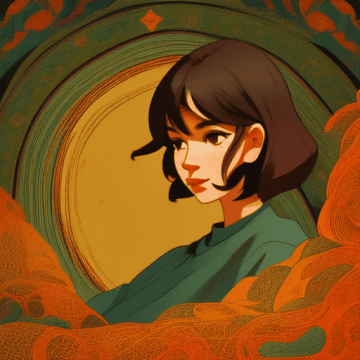animatediff
Maintainer: guoyww

645
🗣️
| Property | Value |
|---|---|
| Run this model | Run on HuggingFace |
| API spec | View on HuggingFace |
| Github link | No Github link provided |
| Paper link | No paper link provided |
Create account to get full access
Model overview
The animatediff model is a tool for animating text-to-image diffusion models without specific tuning. It was developed by the Hugging Face community member guoyww. Similar models include animate-diff and animate-diff, which also aim to animate diffusion models, as well as animatediff-illusions and animatediff-lightning-4-step, which build on the core AnimateDiff concept.
Model inputs and outputs
The animatediff model takes text prompts as input and generates animated images as output. The text prompts can describe a scene, object, or concept, and the model will create a series of images that appear to move or change over time.
Inputs
- Text prompt describing the desired image
Outputs
- Animated image sequence based on the input text prompt
Capabilities
The animatediff model can transform static text-to-image diffusion models into animated versions without the need for specific fine-tuning. This allows users to add movement and dynamism to their generated images, opening up new creative possibilities.
What can I use it for?
With the animatediff model, users can create animated content for a variety of applications, such as social media, video production, and interactive visualizations. The ability to animate text-to-image models can be particularly useful for creating engaging marketing materials, educational content, or artistic experiments.
Things to try
Experiment with different text prompts to see how the animatediff model can bring your ideas to life through animation. Try prompts that describe dynamic scenes, transforming objects, or abstract concepts to explore the model's versatility. Additionally, consider combining animatediff with other Hugging Face models, such as GFPGAN, to enhance the quality and realism of your animated outputs.
This summary was produced with help from an AI and may contain inaccuracies - check out the links to read the original source documents!
Related Models
🤖
AnimateDiff-A1111

85
AnimateDiff-A1111 is an AI model created by conrevo that allows users to animate their personalized text-to-image diffusion models without specific tuning. This model is similar to other anime-themed text-to-image models like animelike2d, animagine-xl-3.1, and animate-diff. Model inputs and outputs The AnimateDiff-A1111 model takes text prompts as inputs and generates animated images as outputs. This allows users to create dynamic, animated versions of their text-to-image diffusion models without the need for extensive fine-tuning. Inputs Text prompts that describe the desired image Outputs Animated images that bring the text prompts to life Capabilities The AnimateDiff-A1111 model can be used to create a wide range of animated images, from simple character animations to more complex scenes and environments. By leveraging the power of text-to-image diffusion models, users can generate highly customized and personalized animated content. What can I use it for? With AnimateDiff-A1111, users can create animated content for a variety of applications, such as social media posts, animated GIFs, or even short animated videos. The model's flexibility and ability to generate unique, personalized animations make it a valuable tool for creators, artists, and businesses looking to add a dynamic element to their visual content. Things to try Experiment with different text prompts to see the range of animated images the AnimateDiff-A1111 model can generate. Try combining the model with other text-to-image diffusion models or explore the use of motion-related LoRAs (Low-Rank Adapters) to add even more movement and dynamism to your animated creations.
Updated Invalid Date

animate-diff

46
animate-diff is a plug-and-play module developed by Yuwei Guo, Ceyuan Yang, and others that can turn most community text-to-image diffusion models into animation generators, without the need for additional training. It was presented as a spotlight paper at ICLR 2024. The model builds on previous work like Tune-a-Video and provides several versions that are compatible with Stable Diffusion V1.5 and Stable Diffusion XL. It can be used to animate personalized text-to-image models from the community, such as RealisticVision V5.1 and ToonYou Beta6. Model inputs and outputs animate-diff takes in a text prompt, a base text-to-image model, and various optional parameters to control the animation, such as the number of frames, resolution, camera motions, etc. It outputs an animated video that brings the prompt to life. Inputs Prompt**: The text description of the desired scene or object to animate Base model**: A pre-trained text-to-image diffusion model, such as Stable Diffusion V1.5 or Stable Diffusion XL, potentially with a personalized LoRA model Animation parameters**: Number of frames Resolution Guidance scale Camera movements (pan, zoom, tilt, roll) Outputs Animated video in MP4 or GIF format, with the desired scene or object moving and evolving over time Capabilities animate-diff can take any text-to-image model and turn it into an animation generator, without the need for additional training. This allows users to animate their own personalized models, like those trained with DreamBooth, and explore a wide range of creative possibilities. The model supports various camera movements, such as panning, zooming, tilting, and rolling, which can be controlled through MotionLoRA modules. This gives users fine-grained control over the animation and allows for more dynamic and engaging outputs. What can I use it for? animate-diff can be used for a variety of creative applications, such as: Animating personalized text-to-image models to bring your ideas to life Experimenting with different camera movements and visual styles Generating animated content for social media, videos, or illustrations Exploring the combination of text-to-image and text-to-video capabilities The model's flexibility and ease of use make it a powerful tool for artists, designers, and content creators who want to add dynamic animation to their work. Things to try One interesting aspect of animate-diff is its ability to animate personalized text-to-image models without additional training. Try experimenting with your own DreamBooth models or models from the community, and see how the animation process can enhance and transform your creations. Additionally, explore the different camera movement controls, such as panning, zooming, and rolling, to create more dynamic and cinematic animations. Combine these camera motions with different text prompts and base models to discover unique visual styles and storytelling possibilities.
Updated Invalid Date

animate-diff

256
animate-diff is a text-to-image diffusion model created by lucataco that can animate your personalized diffusion models. It builds on similar models like animate-diff, MagicAnimate, and ThinkDiffusionXL to offer temporal consistency and the ability to generate high-quality animated images from text prompts. Model inputs and outputs animate-diff takes in a text prompt, along with options to select a pretrained module, set the seed, adjust the number of inference steps, and control the guidance scale. The model outputs an animated GIF that visually represents the prompt. Inputs Path**: Select a pre-trained module Seed**: Set the random seed (0 for random) Steps**: Number of inference steps (1-100) Prompt**: The text prompt to guide the image generation N Prompt**: A negative prompt to exclude certain elements Motion Module**: Select a pre-trained motion model Guidance Scale**: Adjust the strength of the text prompt guidance Outputs Animated GIF**: The model outputs an animated GIF that brings the text prompt to life Capabilities animate-diff can create visually stunning, temporally consistent animations from text prompts. It is capable of generating a variety of scenes and subjects, from fantasy landscapes to character animations, with a high level of detail and coherence across the frames. What can I use it for? With animate-diff, you can create unique, personalized animated content for a variety of applications, such as social media posts, presentations, or even short animated films. The ability to fine-tune the model with your own data also opens up possibilities for creating branded or custom animations. Things to try Experiment with different prompts and settings to see the range of animations the model can produce. Try combining animate-diff with other Replicate models like MagicAnimate or ThinkDiffusionXL to explore the possibilities of text-to-image animation.
Updated Invalid Date
🌀
AnimateLCM-SVD-Comfy

41
AnimateLCM-SVD-Comfy is a converted version of the AnimateLCM-SVD-xt model, which was developed by Kijai and is based on the AnimateLCM paper. The model is designed for image-to-image tasks and can generate high-quality animated videos in just 2-8 steps, significantly reducing the computational resources required compared to normal Stable Video Diffusion (SVD) models. Model inputs and outputs AnimateLCM-SVD-Comfy takes an input image and generates a sequence of 25 frames depicting an animated version of the input. The model can produce videos with 576x1024 resolution and good quality, without the need for classifier-free guidance that is typically required by SVD models. Inputs Input image Outputs Sequence of 25 frames depicting an animated version of the input image Capabilities AnimateLCM-SVD-Comfy can generate compelling animated videos from a single input image in just 2-8 steps, a significant improvement in efficiency compared to normal SVD models. The model was developed by Kijai, who has also created other related models like AnimateLCM and AnimateLCM-SVD-xt. What can I use it for? AnimateLCM-SVD-Comfy can be a powerful tool for creating animated content from a single image, such as short videos, GIFs, or animations. This could be useful for a variety of applications, such as social media content creation, video game development, or visualizing concepts and ideas. The model's efficiency in generating high-quality animated videos could also make it valuable for businesses or creators looking to produce content quickly and cost-effectively. Things to try Some ideas for what to try with AnimateLCM-SVD-Comfy include: Generating animated versions of your own photographs or digital artwork Experimenting with different input images to see the variety of animations the model can produce Incorporating the animated outputs into larger video or multimedia projects Exploring the model's capabilities by providing it with a diverse set of input images and observing the results The key advantage of AnimateLCM-SVD-Comfy is its ability to generate high-quality animated videos in just a few steps, making it an efficient and versatile tool for a range of creative and professional applications.
Updated Invalid Date